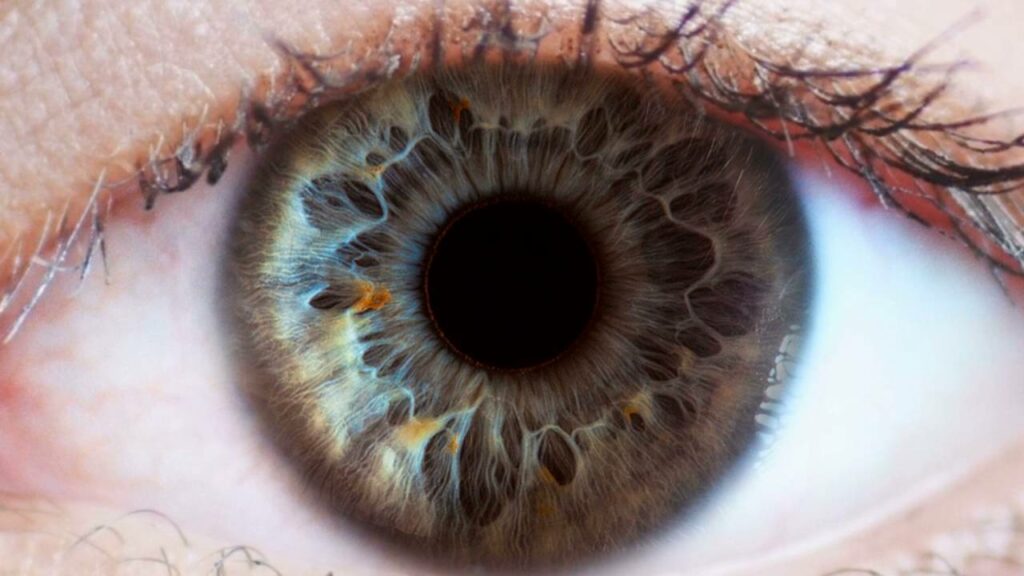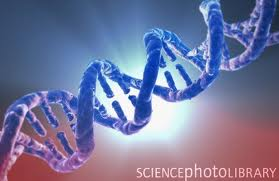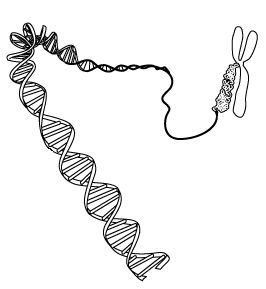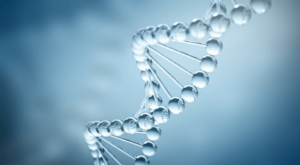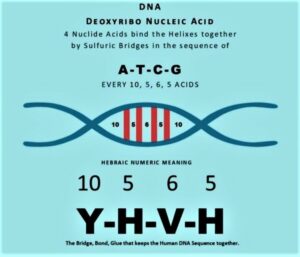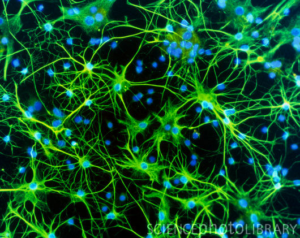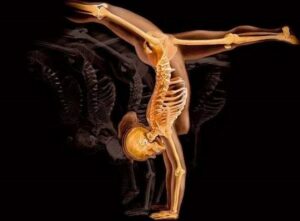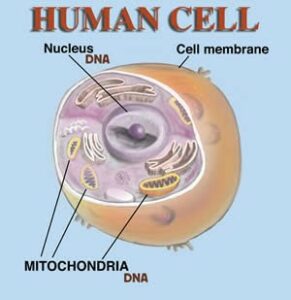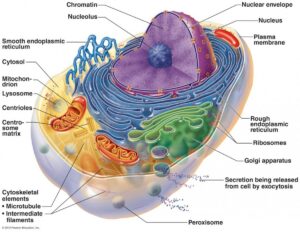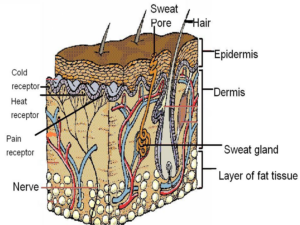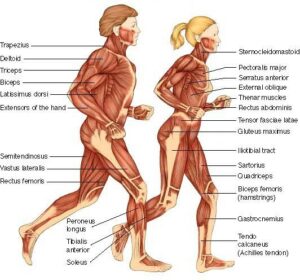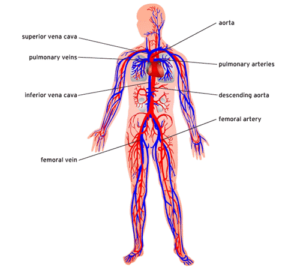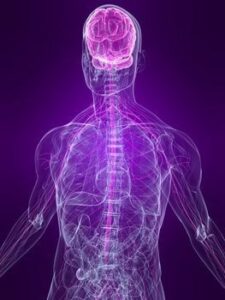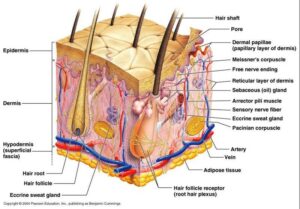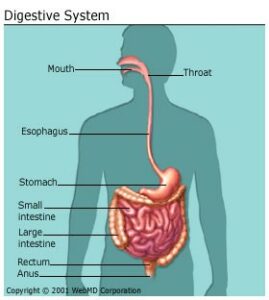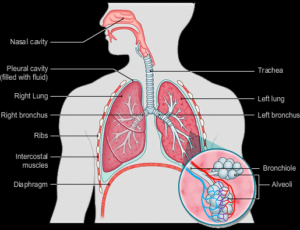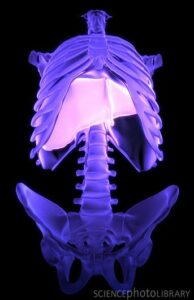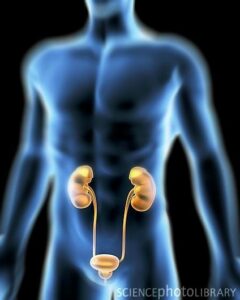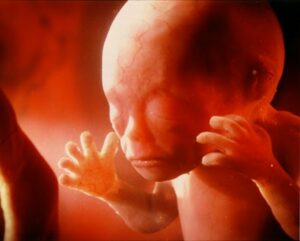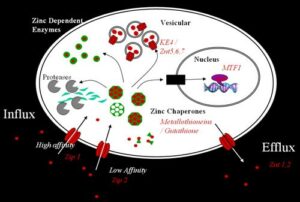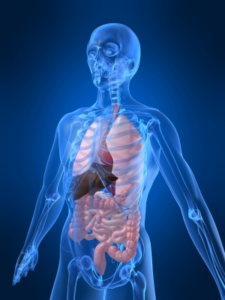
Amazing Facts about the Miraculous Human Body, Created by God
By Dr Richard Kent
Website: www.drrichardkent.org
Email: [email protected]
John 1:1-4
In the beginning was the Word, and the Word was with God, and the Word was God. He was in the beginning with God.
All things were made through Him, and without Him nothing was made that was made.
In Him was life, and the life was the light of men.
……………………………………………………………
Jesus Christ was there at the beginning, and He is the author of life itself!
The Creation of Adam
Genesis 2:7
“The Lord God formed man of the dust of the ground, and breathed into his nostrils the breath of life; and man became a living being.”
DNA – the genetic code of every cell in our bodies
- DNA is quite literally God’s language of biological information.
- DNA is by far the most complex information storage medium known on Planet Earth. It is completely supernatural and miraculous!
- DNA is God’s blueprint of every single cell of the 100 trillion cells in our bodies!
- Your body is made of 100 trillion cells, each containing DNA, the most complex genetic code in the universe.
- Each cell has 3 billion genetic codes to ensure that each cell is correctly manufactured.
- Each cell in your body has an estimated 6 to 8 feet of DNA.
- Each of your 100 trillion cells contains a strand of DNA, which has all of the biological information for that one cell!
DNA, stretched out, would be six feet long!
- If you stretched out one strand of DNA it would be over six feet long!
- Within each cell, encoded in the DNA, are exact instructions to build all the proteins in our bodies!
- These proteins are used to make skin cells, eye cells, brain cells, heart cells. liver cells , blood cells, etc!
GOD has put HIS NAME in the DNA of every single cell of our bodies!
Dr Isaiah Rubinstein is a scientist at the Weizmann Institute of Science, Jerusalem.
He made the following discovery:
- The DNA molecule appears as a double helix, looking like a spiral staircase.
- There are sulfuric bridges which keep the two DNA strands attached together.
3. Every 10 acids, there is a bridge
4. Every 5 acids, there is a bridge
5.Every 6 acids, there is a bridge
6. Every 5 acids, there is a bridge
7. This is a repeating pattern in the DNA double helix spiral.
8. The 10-5-6-5 repeating positions of the sulphuric bridges within DNA are extremely important!
9. The Hebrew Alphabet has 22 letters:
10. The code 10, 5, 6 ,5 repeating, in DNA correspond to the Hebrew Name of God , YHWH
11. This means the GOD has written HIS NAME, YHWH, on the DNA of every single cell of every single human body on Planet Earth!
12. GOD has actually signed HIS NAME in the same way as a famous artist autographs his painting!
13. There are 3 billion genetic codes in every single human cell!
A human brain cell
14. In a human cell it takes three billion (3,000,000,000) of those codes to represents a correct copy of each cell!
15. And we all have 100 trillion cells!
16. This is too fantastic for our simple minds to understand!
Psalm 139:14
“I praise you because I am fearfully and wonderfully made”
17. We do not live in a natural world!
18. We are all supernaturally created by the highest intelligence in the universe – His Name is Jesus Christ!
The average human adult
The average 11 stone adult human body contains approximately 70,000,000,000,000,000,000,000,000,00 atoms and is composed of 60 chemical elements.
- There are about 88 chemical elements in the earth of planet earth.
- Almost 99% of the mass of the human body is made up of the six elements oxygen, carbon, hydrogen, nitrogen, calcium, and phosphorus.
- The average adult is made up of 100 trillion cells.
- We are about 70 percent water.
- A person can live without food for up to 40 days, but only about 3- 7 days without water, 4-8 minutes without air.
The human cell
- We all have about 100 trillion living cells
- We make about 200 million cells per minute, or 300 billion new cells per day
- These 100 trillion cells in our bodies, are all programmed by the genetic code, DNA, within each cell .
- There are 3 billion different genetic codes in every single human cell!
- In the whole body there 10 with 18 zeros after it genetic codes – this is more than the number of seconds in 20 billion years!
The major parts of a typical human cell include
- The cell membrane,
- Nucleus,
- Mitochondria,
- Golgi apparatus,
- Smooth and rough endoplasmic reticulum,
- Ribosomes,
- Lysomes,
- Vacuoles
- Cytoplasm filling.
Quote from Dr Michael Denton, “Evolution: a theory in crisis”
The complex “simple” cell
“The complexity of the simplest known type of cell is so great that it is impossible to accept that such an object could have been thrown together suddenly by some kind of freakish, vastly improbable, event. Such an occurrence would be indistinguishable from a miracle.”
“To grasp the reality of life as it has been revealed by molecular biology, we must magnify a cell a thousand million times until it is 20 Kilometres in diameter and resembles a giant airship large enough to cover a great city like London or New York.
“What we would then see would be an object of unparalleled complexity and adaptive design. On the surface of the cell we would see millions of openings, like the portholes of a vast spaceship, opening and closing to allow a continual stream of materials to flow in and out. If we were to enter one of these openings, we would find ourselves in a world of supreme technology and bewildering complexity…
“The simplest of the functional components of the cell, the protein molecules, were astonishingly, complex pieces of molecular machinery, each one consisting of about 3,000 atoms… What we would be witnessing would be an object resembling an immense automated factory… Larger than any city and carrying out almost as many unique functions as all the manufacturing activities of man on earth…a factory which would have one capacity not equalled in any of our own most advanced machines, for it would be capable of replicating its entire structure within a matter of a few hours.”
“The tiniest bacterial cells are incredibly small, weighing less than 10-12 grams. Each is in effect a microminiaturized factory containing thousands of exquisitely designed pieces of intricate molecular machinery, made up altogether of one hundred thousand million atoms, far more complicated than any machine built by man… The size, structure, and component design of the protein synthetic machinery is practically the same in all living cells… No living system can be thought of as being primitive or ancestral with respect to any other system, nor is there the slightest empirical hint of an evolutionary sequence among all the incredibly diverse cells on earth.”
References
* Dr. Michael Denton, Evolution: A Theory in Crisis (Bethesda, Maryland: Adler & Adler, 1986) pp. 264, 328-9, & 250.
………………..
God has created our eyes and our ears
Proverbs 20:12-13
“The hearing ear and the seeing eye,
The Lord has made them both”
The Human Eye
- The cornea, the outermost layer of the eye, is the only living tissue in the human body without blood vessels.
- It receives nutrients from tears and from the aqueous humour.
- Our eyes can distinguish up to one million colour surfaces and take in more information than the largest telescope known to man.
- If you could save all the times your eyes blink in one lifetime and use them all at once you would be blind for 1.2 years!
- People blink once every four seconds. That’s because the eyelashes act as windscreen wipers, keeping dust and grime from getting into the eye itself.
- The human eye is covered in detail on this website.
The Human Ear
- Our hearing is so sensitive it can distinguish between hundreds of thousands of different sounds.
- We also balance with our semi –circular canals
Our sense of Touch
- Our sense of touch is more refined than any device ever created.
- When we touch something, we send a message to our brain at 124 mph.
Our Taste buds
- The average life of a taste bud is 10 days.
- We make one litre of saliva a day.
- Your sense of taste protects you from unsafe foods.
- If you ate poisonous or rotten foods, you would probably spit them out immediately, because they usually taste revolting. That way, you stop them from entering your stomach.
The Human voice
- The sound of our voices is generated by our vocal cords in our larynx.
- The lungs produce adequate airflow and air pressure to vibrate our vocal cords.
- The vocal cords are a vibrating valve that chops up the airflow from the lungs into audible pulses that form the laryngeal sound source.
- The muscles of the larynx adjust the length and tension of the vocal folds to ‘fine tune’ pitch and tone.
- Our human voices are incredibly complex.
The skeletal system
Bones, associated cartilages, and joints provide:
- Strength
- Support
- Shape
- Protection
- Leverage
- Cell production
………………………………………………………………….
- A newborn baby has 350 bones, but a fully-grown adult has only 206, because many bones fuse together.
- The largest bone is the pelvis, or hip bone. In fact the pelvis is made of six bones joined firmly together.
- The longest bone is the ‘femur’, in the thigh. It makes up almost one quarter of the body’s total height.
- The smallest bone is the ‘stirrup’, deep in the ear. It is hardly larger than a grain of rice.
- The ears and tip of the nose do not have bones inside them. Their inner supports are cartilage or ‘gristle’, which is lighter and more flexible than bone.
- This is why the nose and ears can be bent.
- More than half the bones in the human body are in the hands and feet.
- The big toe is actually one of the most important elements within the body, as it balances the skeleton and enables the owner to move forward. Without a big toe, we would simply fall over.
- Your femur in your thigh deals with more than 1,000 pounds of compression and hundreds of pounds of tension from the muscles that are anchored to it.
- It’s a good thing, then, that normal bone is three times as strong as good solid wood and nearly as strong as iron!
- Tests have shown that the tensile strength of bone is 35,000 pounds per square inch, while iron is 40,000 pounds per square inch.
- But bone material is superior to iron because it is three times lighter and much more flexible.
The Muscular System
- We have over 600 muscles
- There are about 60 muscles in the face.
- Smiling is easier than frowning!
- It takes 20 muscles to smile and over 40 to frown.
- The longest muscle in the body is the sartorius, from the outside of the hip, down and across to the inside of the knee – it rotates the thigh outwards and bends the knee.
- The smallest muscle in the body is the stapedius, deep in the ear. It is only 5mm long and thinner than cotton thread. It is involved in hearing.
- The biggest muscle in the body is the gluteus maximus, in the buttock. It pulls the leg backwards powerfully for walking, running and climbing steps.
- Just sitting, standing, and walking are incredibly complicated!
The Circulatory System
The circulatory system includes
- Heart,
- Blood vessels (arteries, veins and capillaries),
- Blood, (flow of blood and nutrients throughout body)
……………………….
- Blood is a liquid organ.
- The average adult has 10 pints of blood in his or her body.
- We give birth to 100 billion red blood cells every day and about two million red blood cells every second.
- The total length of your circulatory system stretches an amazing 60,000 miles. That is more than twice the distance around the earth.
- In one day, the blood travels a total of 12,000 miles.
- Capillaries are so small that red blood cells can only travel through them in single file.
- The aorta, the largest artery in the body, is almost the diameter of a garden hose.
- Capillaries, on the other hand, are so small that it takes ten of them to equal the thickness of a human hair.
- 10 pints of blood circulates through the body three times every minute.
- In one day, the blood travels a total of 12,000 miles – that is more than the distance from London to Sydney!
- Your heart beats about 100,000 times in one day and about 40,000,000 times a year.
- In one hour the heart works hard enough to produce enough energy to raise almost one ton of weight one yard from the ground.
- The heart beats around 3 billion times in the average person’s life.
- About 2 million blood cells die in the human body every second, and the same number are born each second.
- Within a tiny droplet of blood, there are some 5 million red blood cells, 300,000 platelets and 10,000 white cells.
- It takes about 1 minute for a red blood cell to circle the whole body.
- Red blood cells make approximately 250,000 round trips of the body before returning to the bone marrow to die.
- Red blood cells may live for about 4 months circulating throughout the body, feeding the 100 trillion other body cells.
The Nervous System
- The nervous system includes the brain, spinal cord, nerves, nerve endings, and controls all body functions
- Our brain is more complex than the most powerful computer and has over 100 billion nerve cells.
- The central nervous system is connected to every part of the body by 43 pairs of nerves.
- Twelve pairs go to and from the brain, with 31 pairs going from the spinal cord.
- There are nearly 45 miles of nerves running through our bodies.
- Messages travel along the nerves as electrical impulses. They travel at speeds up to 248 miles per hour.
- During the first month of life, the number of connections or synapses, dramatically increases from 50 trillion to 1 quadrillion.
- If an infant’s body grew at a comparable rate, his weight would increase from 8.5 pounds at birth to 170 pounds at one month old.
- Unlike other body cells, brain cells cannot regenerate. Once brain cells are damaged, they are not replaced.
- The brain and spinal cord are surrounded and protected by cerebrospinal fluid.
The Skin
Skin is the largest body organ.
In one square inch of skin there are
- Four yards of nerve fibres,
- 600 pain sensors,
- 1300 nerve cells,
- 9000 nerve endings,
- 36 heat sensors,
- 75 pressure sensors,
- 100 sweat glands,
- 3 million cells,
- 3 yards of blood vessels
……………………………………………………………………………
It is normal to lose 100 hairs per day from the scalp.
Every finger, every thumb, and every tongue, has its own individual print, which is unique to each person.
Fingernails are one of the human body’s strongest components. They contain keratin, which is also found in rhino horns!
The Immune System
The lymphatic system includes
- The lymph vessels,
- Central lymphoid tissue,
- Peripheral lymphoid organs,
- Lymphocytes,
- Provides lymphatic drainage and protection against infections
…………………………………………………………..
The skin secretes antibacterial substances.
These substances explain why you don’t wake up in the morning with a layer of mould growing on your skin
Most bacteria and spores that land on the skin die quickly.
Tears and mucus contain an enzyme (lysozyme) that breaks down the cell wall of many bacteria.
Lymph nodes contain filtering tissue and a large number of lymph cells.
When fighting bacterial infections, the lymph nodes swell with bacteria and the cells fighting the bacteria, to the point where you can actually feel them.
Swollen lymph nodes may therefore be a good indication that you have an infection of some sort.
The Digestive System
The alimentary canal includes the
- Mouth,
- Oesophagus,
- Stomach,
- Small intestine,
- Large intestine,
- Liver,
- Pancreas,
- Salivary glands,
- Teeth,
- Tongue
- Is reasponsible for the digestion and absorption of food
……………
- Adults eat about 500 kg of food per year.
- 1.5 litres of saliva are produced each day.
- The oesophagus is approximately 25cm long.
- Muscles contract in waves to move the food down the oesophagus.
- This means that food would get to a person’s stomach, even if they were standing on their head.
- An adult’s stomach can hold approximately 1.5 litres of material.
- Every day 11.5 litres of digested food, liquids and digestive juices flow through the digestive system, but only 100 mls of fluid are lost in the motions.
- In the mouth, food is either cooled or warmed to a more suitable temperature.
- We grow two sets of teeth.
- Our 20 ‘baby teeth’ are replaced starting at around 6-7 years of age with our 32 ‘adult teeth’.
- Stomach lining cells produce mucus, pepsin, and Hydrochloric Acid with a ph of 2.0 (100,000x the acidity of your bloodstream).
The Respiratory System
The respiratory system includes
- Lungs,
- Nose,
- Trachea,
- Bronchi,
- Bronchioles,
- Alveolar sacs,
- Alveoli
The respiratory system is responsible for gaseous exchange
Our lungs inhale over two million litres of air every day, without even thinking
The surface area of the lungs is approximately the same size as a tennis court.
On average, you breathe 23,000 times a day.
You take about 600 million breaths during your lifetime.
Our nose is our personal air-conditioning system: it warms cold air, cools hot air and filters impurities.
At rest, the adult body takes in and breathes out about 6 litres of air each minute.
The right lung is slightly larger than the left.
Hairs in the nose help to clean the air we breathe as well as warming it.
The highest recorded “sneeze speed” is 165 km per hour.
The surface area of the lungs is roughly the same size as a tennis court.
The capillaries in the lungs would extend 1,600 kilometres if placed end to end.
We lose half a litre of water a day through breathing. This is the water vapour we see when we breathe onto glass.
A person at rest usually breathes between 12 and 15 times a minute.
The breathing rate is faster in children and women than in men.
The Liver
- The liver is responsible for regulation of the many body functions
- The liver is often called the body’s chemical factory.
- Scientists have counted over 500 liver functions.
- If a person has two-thirds of their liver removed from trauma or surgery, it will grow back to its original size in four weeks.
Urinary System
The urinary system includes the
- Kidneys,
- Ureters,
- Urinary bladder,
- Urethra
- Is responsible for the production and excretion of urine
The Reproductive System
The function of the reproductive system is to reproduce the human race
Homeostasis – the regulation of the body’s internal environment
Homeostasis, the balance of all body systems, is incredibly complex
- Regulation of temperature,
- Levels of oxygen, carbon dioxide, ph (acidity,) blood sugar, potassium, sodium, and thousands of other, interdependent, parameters!
In Summary
The human body is by far the most complex machine on the Earth.
There is nothing even remotely close.
The brain is the most sophisticated computer in the universe.
Our DNA is the most complex genetic code in the universe.
Haemoglobin, designed to carry oxygen, is one of the most sophisticated examples of molecular engineering ever discovered.
The Krebs cycle, which happens within the mitochondria of all living cells, is one of the most sophisticated and complicated chemical processes ever discovered.
Only a supreme intelligence, whose name is Jesus Christ, could have created such a complex and sophisticated living organism.
The human body is so sophisticated and so complex that nobody really understands exactly how it works!
Eternal God
Psalm 14:1
The fool says in his heart, “There is no God.”
Isaiah 40:28
Do you not know?
Have you not heard?
The Lord is an Eternal God,
The Creator of the whole earth.
He does not get tired or weary;
There is no limit to His wisdom.
Psalm 139:14
I will praise you, for I am fearfully and wonderfully made
………………………………………………………….
I hope you have enjoyed this teaching and associated YouTube videos
God bless you!
Richard
Dr Richard Kent MB BS
If you have any comments or questions, please send an e-mail to:
